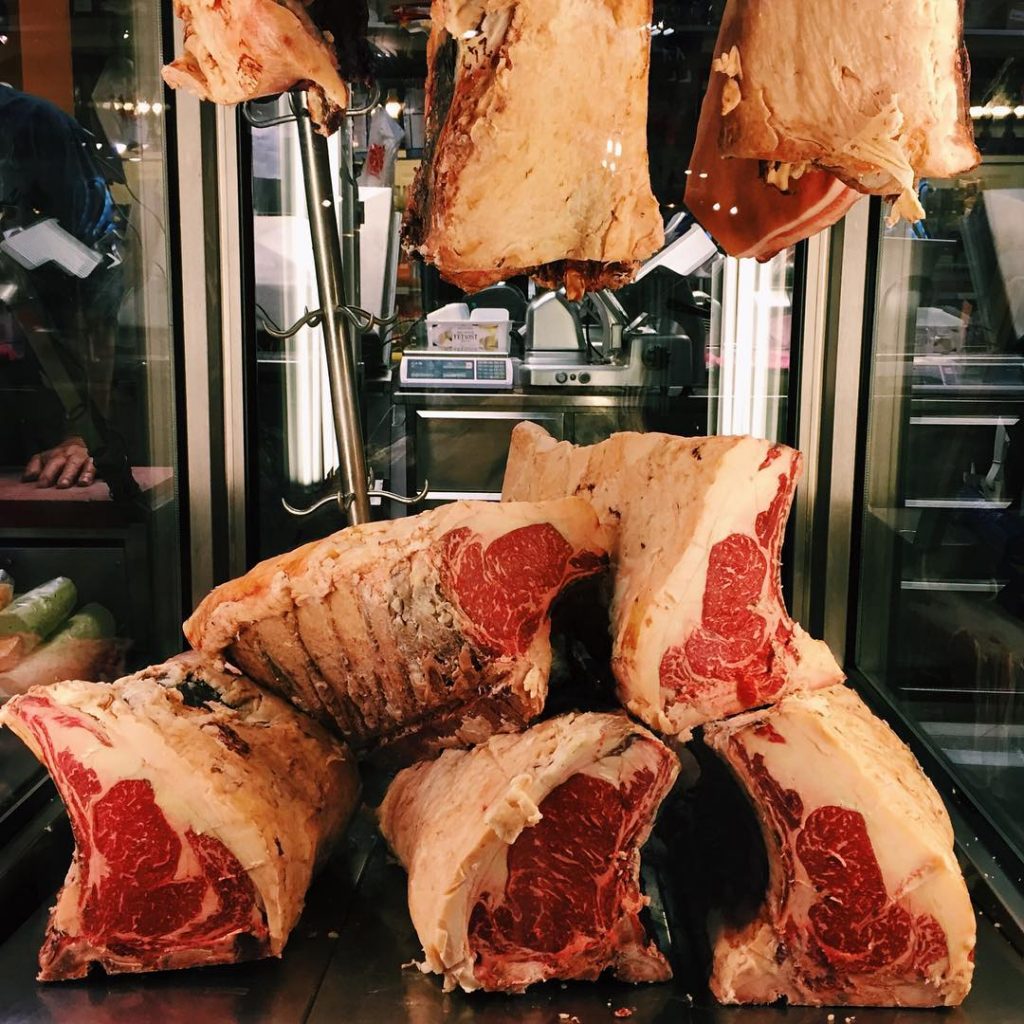The Specific Carbohydrate Diet (SCD Diet) for IBS and IBD
The Specific Carbohydrate Diet, or SCD Diet, is one of the longest researched lifestyle changes to alleviate life-threatening digestive issues. Beginning with the "Banana Diet," developed nearly 100 years ago for children with celiac disease, the SCD diet quickly showed results for IBS and IBD.
Overview
- Restrictive diet: no complex carbohydrates allowed, no processed foods, no food additives, and no preservatives.
- Gluten-free, dairy-free.
- Part of the Paleolithic diet family.
- One of the earliest diets prescribed for digestive issues, starting as the Banana Diet in 1924.
- The science: complex carbs are difficult to digest, causing overgrowth of bad gut bacteria, inflammation and increased levels of toxins.
- SCD may ease symptoms of Crohn’s disease and ulcerative colitis, as well as IBS.
- It takes a long time – up to a year – to show effectiveness.
- The research is inconclusive. Certain studies have shown it to be effective, others have found no difference.
Background history
The Specific Carbohydrate Diet first came out in the form of the Banana Diet in 1924. Its was first proposed by Dr. Sydney V. Haas, a U.S. pediatrician who noticed significant improvements in his patients with celiac disease after encouraging them to eat large quantities of bananas every day, in place of other foods.
Although he conceded that other vegetables and fruits would also be effective, he suggested bananas specifically as they are less of a laxative than other fruits. Dr. Hass then went on to build the first real SCD diet around the banana SCD diet and his research on his patients’ reactions to gluten. During World War II, food shortages caused dietary restrictions, which led a Dutch pediatrician, Dr Dicke, to observe significant improvements in his celiac patients during bread shortages.1
The modern SCD diet was popularized in 1987, through the book Breaking the Vicious Cycle, by biochemist Elaine Gottschall (MSc), the mother to a 5 year old girl with ulcerative colitis. In Breaking the Vicious Cycle, the effects of SCD on conditions other than celiac disease is discussed such as IBS, Crohn’s disease, ulcerative colitis, diverticulitis, cystic fibrosis, chronic diarrhea, bacterial infections, ADHD, and autism.
The rapid increase of IBD and IBS cases in recent decades strongly imply that these conditions go beyond just genetics. An environmental trigger, such as diet, is likely to be involved, possibly by initiating changes in gut flora and affecting intestinal permeability.2
What is the Specific Carbohydrate Diet?
The specific carbohydrate diet is a restrictive diet that restricts all monosaccharides except for fructose, galactose and glucose. As with many diets significant to IBS and IBD, it is a more restrictive diet that falls under the umbrella of the Paleolithic diet family, and is not only gluten free, but zero grain. On paleo diets, we return to a diet similar to the diets that our ancestors have been digesting for hundreds of millions of years. Paleo removes man-made foods such as bread as well as compounds and toxins that are packaged with modern food, often literally added during packaging. Many modern maladies such as diabetes, heart disease and obesity can be linked to these recent changes in diet.
SCD is also similar to the more recent GAPS diet (gut and psychology syndrome) derived from it, used to treat mental disorders which SCD is also thought to treat, such as autism and ADD, as well as depression, schizophrenia, OCD, and even epilepsy. Another related diet is the AIP diet (autoimmune protocol) which is used to reduce intestinal inflammation to treat autoimmune disorders.
How does it work?
As the name implies, the SCD diet limits complex carbohydrates such as disaccharides and polysaccharides. SCD allowances and restrictions are based on the molecular structure of the carbohydrates in a certain food. Carbohydrates consist of saccharides, deriving from the Greek word σάκχαρον (sákkharon), which essentially means “sugar”. Monosaccharides are the most simple form that cannot be broken down any further.
Complex carbs with more than one molecule, such as disaccharides (formed when two monosaccharides combine) and polysaccharides (consisting of multiple monosaccharides all joined together) are more difficult for the body to absorb. The reasoning behind the SCD diet is that monosaccharides (single) are more easily absorbed, which is why some fruits and vegetables are allowed in this diet.
Even though the body may need more effort to break down complex carbs, they can be fine in moderation. However, the influx of increasingly unusual foods we ingest daily, like glitter coffee, can overload the microbes found at the end of our distal intestine and change the composition of microbes living in our gut. As the gut microbiome plays an important role in keeping your gut healthy, this change can show itself in the form of common digestive issues such as gas, bloating, and diarrhea or IBS. Due to the link between gut bacteria and our immune system, it can also trigger the development of more serious problems such as IBD.
The SCD diet aims to work by eliminating synthetic compounds, man-made ingredients and complex carbohydrates from the gut, and hence stopping the inflammatory processes theorized to be associated with these foods and starving out the bad bacteria that usually feeds on them. This process then allows the gut to heal and may benefit conditions such as Crohn’s, UC, and IBS. At the same time, to encourage the growth of good bacteria in the gut, the SCD diet relies on probiotics such as the specially prepared SCD yogurt, which has more good bacteria than commercial yogurt due to its 24-hour fermentation period.
Since we have only been eating those foods for a short time, our guts have not yet had time to adapt to this modern diet. Keep that in perspective as you try to adjust your gut flora back to the Paleolithic age. We have eaten this way before, and can eat this way again.
Starting the Specific Carbohydrate Diet
Starting out on SCD progresses in adjustment phases, just like the carnivore diet. But unlike the carnivore diet, it begins restrictive and opens up. Once your body adjusts a bit and your population of bad bacteria is starved out and replaced by good bacteria, you can be less restrictive and focus on a solid defense, rather than an aggressive offense.
During this period, you need to be patient. Cheating is counterproductive on the SCD diet. If you want to find out whether eating specific carbs is beneficial for your body, you must adhere to it completely. The proposed mechanism of the SCD diet involves deep changes in your gut. If it is going to be effective for you, this is a diet that takes time.
If you begin to feel a positive difference in a month, that’s amazing! But keep in mind, you may not see significant results for two or three months, and it can take up to – or even more than – a year. At times you may even feel like you’re on a roller coaster, with periodic highs and lows.
Don’t be too deterred, even if you see your basic symptoms begin to dissipate fairly quickly, as the actual healing of your gut will take time.
The SCD Diet is restrictive, but if concentrating on self-prepared and organic food is more your style, it could be easier to adhere to than other diets. FODMAP is very restrictive to a large amount of foods that sometimes seem random and it takes both time and work to learn. The keto diet is time consuming and micromanages both the foods and quantities you can eat and measure. The carnivore diet is, oddly, the easiest diet to go on, but only if you’re able and willing to eat only meat, salt, and water every day.
After giving your gut bacteria time to rebuild itself, you can begin trying to reintroduce some foods that were previously not allowed. Remember that even a minor divergence can have significant effects. After about a year, your guts should be stable enough to let you experiment, but be careful as you do so.
Read food labels, but be aware they may not be accurate. If a product directly claims to be organic or natural, that isn’t necessarily the truth, so take labels with a pinch of salt.
While starting out on the diet, keep a food journal to track what you are eating and better identify negative or positive effects. Ask restaurants to provide exact descriptions of their ingredients. As certain foods could have traces of offensive compounds, be aware when eating one particular food in large amounts.
A friend recently told me a story about how her son always wanted to go to McDonalds when he was a kid. To him, the McNugget was the holy grail of food, and he could rediscover it like Indiana Jones up to 20 times a trip, 7300 times a year. Eventually, after correctly suspecting he was in a suggestible phase, she sat him down to teach him what he was eating. It worked, and after being away from it for only a little while, he couldn’t even stand smelling or looking at it. Cravings go away in absence, as both your mind and body gets used to being without certain foods.
Consult with your doctor before making any drastic changes to your diet. They will be able to give you hints about what foods may be more problematic for you, warn you if you should not begin a diet restrictive of a certain food because of personal issues or deficiencies, and track your progress and health as you go along.
SCD food list
On the specific carbohydrate diet, an SCD food list is less necessary than in diets such as the ketogenic and FODMAP diets. SCD follows a more paleo attitude. It removes foods that could be adulterated when processed, or as well as foods that include added sugars, artificial sweeteners, preservatives, and other additives. It’s often just as important to know whether you can eat a type of food, rather than knowing each and every individual food.
Like our ancestors, we must use our judgement to determine if something is edible, contains a wheat product, has high fructose corn syrup, or – these days – if it’s even food at all. The intention of this list is to provide that general idea, but be sure to consult a full list if you are unsure.3
In the SCD diet, the only way to be sure that a food is acceptable, is to make it at home from fresh, preferably organic, ingredients. A healthy dose of suspicion should be included in the SCD diet, and you should apply that to every label, ingredient, grocer, butcher, friend, and family member – but maybe go easy on your friends and family, just make sure they know your specific needs.

Meat
- SCD Legal
- Chicken, turkey, beef, fish, pork, wild game, bacon (cured meats are fine), lamb, and seafood.
- SCD Illegal
- Processed, smoked, canned, breaded, dried meat, and meat in unknown brine or other solutions. Organic is best.
Vegetables
- SCD Legal
- Common vegetables, either fresh or frozen. Organic, of course, is best.
- SCD Illegal
- Any vegetables that have additives, or you are unsure of the content.
Fruits
- SCD Legal
- Common fruits. Organic, again, is best.
- SCD Illegal
- Any fruits that have additives, or you are unsure of the content.
Dairy
- SCD Legal
- Eggs, SCD yogurt – made to the specific carbohydrate diet specifications, aged cheeses, pasteurized and grass-fed butter, and dry curd cottage cheese. Organic, yet again, is best.
- SCD Illegal
- All milk from animals, margarine, all milk-based products – unless used for making SCD yogurt, and all soft cheeses – except dry curd cottage cheese.
Grains
- SCD Legal
- None of them. This includes grains that you might think are healthy or are possibly allowed on a more standard gluten-free diet, such as quinoa and brown rice.
- SCD Illegal
- All of them.
Starches
- SCD Legal
- None of them.
- SCD Illegal
- All of them.
Nuts
- SCD Legal
- All standard nuts, with no additives. Organic, as it always seems to be and always will be, is best.
- SCD Illegal
- Be wary of commercial roasted or salted nuts, as there may be additional ingredients added.
Seeds
- SCD Legal
- Seeds are generally acceptable.
- SCD Illegal
- Flax, chia, and hemp seeds.
Legumes
- SCD Legal
- White, lima, black, navy, and green beans, lentils, and split peas. Organic is probably best.
- SCD Illegal
- Beans in which you are unsure of the cooking process, garbanzo, kidney, fava, pinto and mung beans, bean sprouts, and chick peas, as well as soy beans in any form.
Spices
- SCD Legal
- Standard single spice products are fine.
- SCD Illegal
- Mixed spices, spices with anti-caking agents, and spices where you are unsure of the contents. For example, curry powder, garam masala, chili powder, onion powder, and garlic powder should all make you wary.
Sweeteners
- SCD Legal
- Honey.
- SCD Illegal
- Everything else.
Drinks
- SCD Legal
- Drinks overlap with many other categories and share similar legal status. Standard coffee and tea, water, and approved fruit juices are acceptable. Organic, in case you haven’t heard, is best.
- SCD Illegal
- Instant coffee, some tea, any juices that you cannot be 100% positive of the contents, soda, and milk.
Alcohol
- SCD Legal
- Dry wine is the easiest, but you may need to check with an attendant, the internet, or a friend who has tried it, because the label or grape is not always forthcoming. Vodka, gin, and the entire whisky family are also acceptable.4
- SCD Illegal
- Beer, sweet wine, liquors, brandy, and sherry.
Please see our article for more on alcohol and its relation to IBS and IBD.
Sweets
- SCD Legal
- Unflavored gelatin.
- SCD Illegal
- No candy. Sorry kids. This list is being posted on Halloween, so I feel moved to mention that for some people, in some cases, honey-based candy could be okay. Try it if you’d like, but do so at your own risk.
Other foods
- SCD Legal
- Inspect oils closely and tailor them to your own use. Most are allowed, but not recommended, and oils like coconut are particularly bad for IBS and IBD. Homemade dressings, condiments, vinegar, and foods fermented from SCD legal items. Final reminder, organic is best.
- SCD Illegal
- Unless you know who made it and can confirm that you can eat it, try not to buy anything at a shop.
In summary, that’s no to “noodle rings,” a 1940’s bundt molded and bundt-sized pasta surprise filled with whatever unholy concoction that could be stuffed in there, but yes to every bizarre jello salad from the latter half of the 20th century, as long as the contents are SCD legal. A jello mold filled with bananas, eggs, and bacon is fine, but leave out the hotdogs, spam, and fava beans. It is unclear if aspic is SCD legal, but do yourself a favor and stay away from it anyway, even if it’s organic.
The SCD diet and you
The Specific Carbohydrate Diet is the earliest common modern diet prescribed for digestive disorders. It has seen significant use and observation over nearly 100 years, although it runs into the general problems that any diet encounters with scientific surveys and research into actual effectiveness.
SCD has a longer introductory period than other common diets for digestive relief, so if you are looking for a diet which shows quicker results, you might want to try something like the FODMAP diet first, or plunge straight into eating meat all the time.

On the most part, the jury is still out on the effectiveness of the SCD diet. Research has shown that the SCD diet can be effective for IBD 5 but the effects may be patient specific.6
It is difficult to generalize the health effects of diets like the SCD. Ultimately, the effectiveness of dietary modifications are dependent on the intestinal flora of the individual, which as we already know, is unique in every person. In many cases, the only way to find out if a diet works, is to try it out yourself.
As always, look at your own history and dietary patterns, issues, and adventures, and consult with your doctor or a nutritionist before making any drastic dietary adjustments.
- https://www.cureceliacdisease.org/wp-content/uploads/SU07CeliacCtr.News_.pdf
- See our excellent article about the carnivore diet for more information about intestinal permeability
- The website for Breaking the Vicious Cycle, the book that created the modern SCD diet, contains a larger and more specific list of SCD foods. It also provides a great guide to the beginner diet and a recipe for SCD yogurt.
- Note on organics: Organic wines have come a long way in the last decade, both in price and quality. You should also look into bio-dynamic and sustainable. Many wine sellers can tell you if a bottle is effectively organic, because sometimes producers simply haven’t gone through the process, or are too stubborn to tweak one minor thing, to receive the organic certification, even if they’ve been making wine that way for a lifetime.
- Maeve McCormick, Nora & V Logomarsino, John. (2017). The Specific Carbohydrate Diet in the Treatment of Crohn’s Disease: A Systematic Review: McCormick NM et al . Specific Carbohydrate Diet in Crohn’s Disease. Journal of Gastroenterology and Hepatology Research. 6. 2392-2399. 10.17554/j.issn.2224-3992.2017.06.688.
- Dubrovsky, A., & Kitts, C. L. (2018). Effect of the Specific Carbohydrate Diet on the Microbiome of a Primary Sclerosing Cholangitis and Ulcerative Colitis Patient. Cureus, 10(2), e2177. doi:10.7759/cureus.2177

Comments